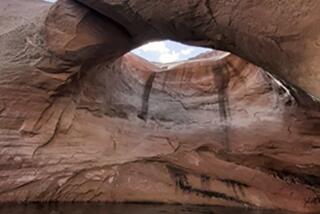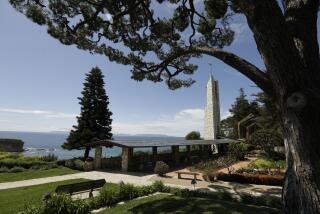A riverbed layer cake
- Share via
Site: The Ricardo Formation, Red Rock Canyon State Park
Where: Off Highway 14 near Ridgecrest
Lore: You’ve seen this place before. Look at the backdrop for the Hannassey ranch in “The Big Country” or the cliffs that Zero and Stanley climb in the movie “Holes.” The dramatic crags of Red Rock Canyon have been a frequent star in movies over the years. The formation was part of the old Hager Family Ranch and is named for an innkeeper or cowboy or family member named Ricardo; the actual origin is a bit unclear. Red Rock Canyon was a backdrop for the Mojave-to-Bishop stage run in the late 1800s.
Wild forces: The sedimentary layers that make up the formation are the stacked remains of a river flood plain. The dark layers are former river channels, made up of sand and gravel, with pebbles and cobbles that have been rounded by being rolled along a riverbed. The lighter layers are composed of sand and clay deposited when the river flooded. The formation was created in a geologic time epoch called the Miocene, about 5 million to 23 million years ago.
Here sediments preserve the remains of horses and camels that were the size of large dogs as well as birds, rodents, lizards and other creatures whose descendants would live today near a large river system. This means there were mountains to the north or east where a lot of water could accumulate. The very top of the pile of sediments is capped by a coarse volcanic tuff, or ash fall, and below that are immense layers of ancient lava. So the river that deposited the sand and fossils traveled through an active volcanic area like we now see near Mammoth Lakes and along the Owens River.
The sculpted appearance of the cliff has been created by differential erosion, meaning the sediments are scarred differently depending on their grain size and cementation. The silts and clays erode easily and look vertically fluted while the conglomerate is virtually unaffected by rainwater erosion. The effect of water erosion has created a spectacular cliff of changing shapes despite the fact that it only rains about 3 inches a year here.
-- John Foster
Geologist, Cal State Fullerton
More to Read
Sign up for The Wild
We’ll help you find the best places to hike, bike and run, as well as the perfect silent spots for meditation and yoga.
You may occasionally receive promotional content from the Los Angeles Times.






